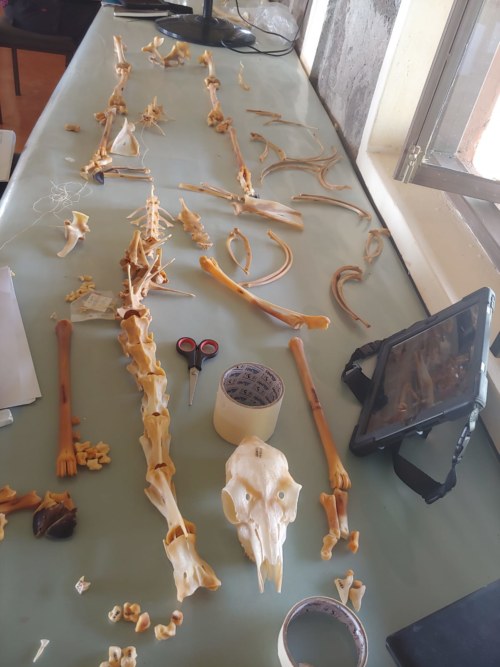
Our main focus this week has been trying to understand mammalian bone structure and functions. Students learned about mammalian evolution and adaptation to different ecological habitats. Bones tell us about the diets, locomotion style, and types of environment animals occupied. For instance, zebras have high crowned teeth (hypsodont), designed to better handle the tough foods they feed on. Humans, on the other hand, have low, rounded cusps (bunodont) and thick enamel to suit their dietary needs. Students familiarized themselves with human, gerenuk, warthog, zebra, and leopard bones, drawing and labeling the diagnostics features in the teeth, skull, forelimbs, and hind limbs that could easily help them in comparative analysis.
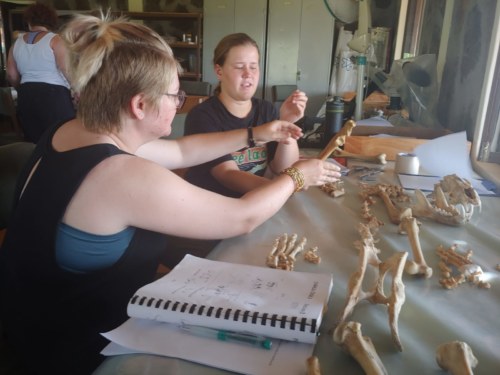
Amber and Becca siding the ulna of a gerenuk. Photo credit: Medina Lubisia.
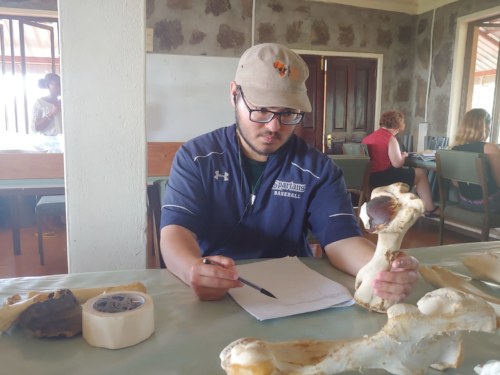
Jared sketches the humerus of a zebra. Photo credit: Medina Lubisia.
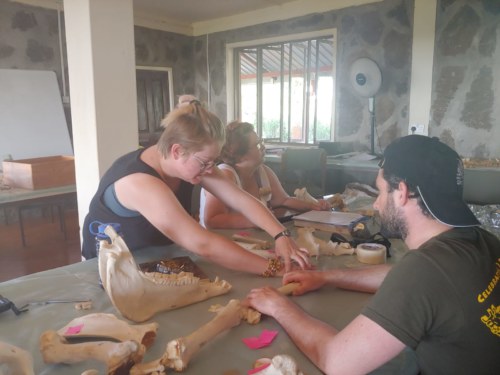
Amber and Zak discuss equid metapodials. Photo credit: Medina Lubisia.
Later in the week, Dr. Miller introduced students to the Miocene mammals of Turkana Basin. Before the Miocene epoch (22.5-5.3 mya), Africa as a continent was completely isolated, and as such, had its own unique fauna (Afrotheria). The exchange of fauna happened in the early Miocene, when the African plate “bumped” into the Eurasian plate. Miocene mammals of the Turkana Basin include primates, proboscideans (deinotheres and gomphotheres), perissodactyls (rhinocerotids), hyracoids (hyrax), and artiodactyls (tragulids, suids, and giraffids). Early Miocene sites in the Turkana Basin include Buluk, Kalodirr, Nabwal, Lothidok, Lothagam, and Loperot. Buluk is a middle Miocene site on the east side of Lake Turkana, and is famous for fossil monkeys. Some of the cercopithecids found here include Noropithecus bulukensis and Noropithecus fleaglei. We will be visiting Buluk on Monday, with Dr. Miller, who has been working there for over a decade.
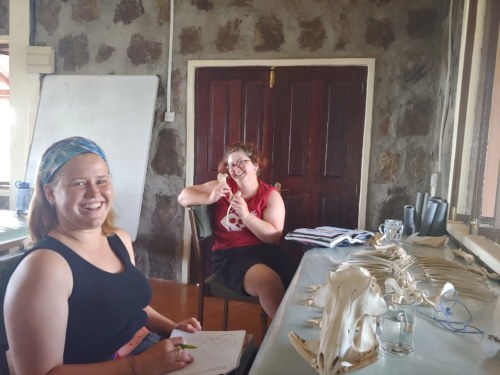
Becca and Emma working on the suid (warthog).
Photo credit: Medina Lubisia.
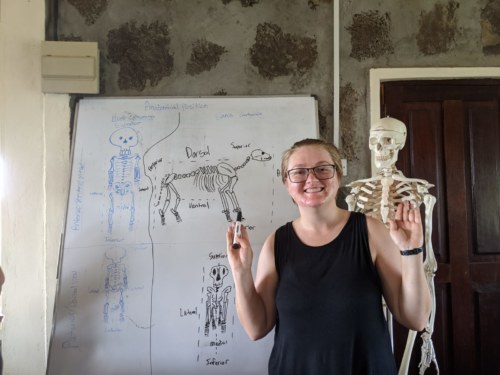
Amber drew these amazing skeletons as part of revision. Photo credit: Medina Lubisia.
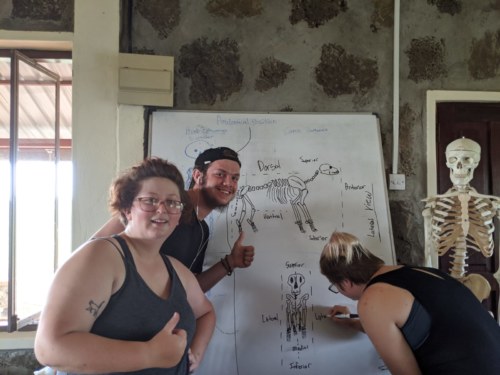
Emma and Michael loved Amber’s work! Photo credit: Medina Lubisia.
On Saturday, Dr. Miller and William Woto (Lab assistant) introduced students to collection protocols for fossils, and later led them on a tour in the TBI fossil storage lab where they examined Plio-Pleistocene and Miocene fossils. A visit to the preparation lab got the students excited as they learned how to remove matrix from fossils using an air scribe. The air scribe meticulously (grain by grain) removes sediment from a fossil without destroying its original surface.
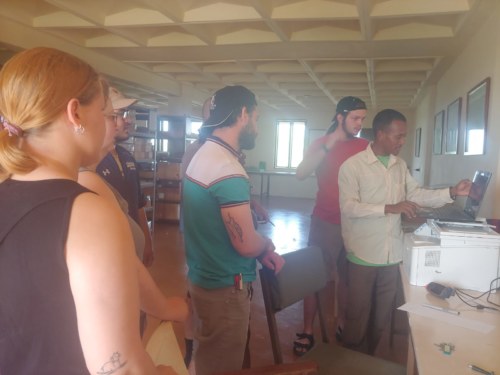
William showing students the cataloguing system. Photo credit: Medina Lubisia.
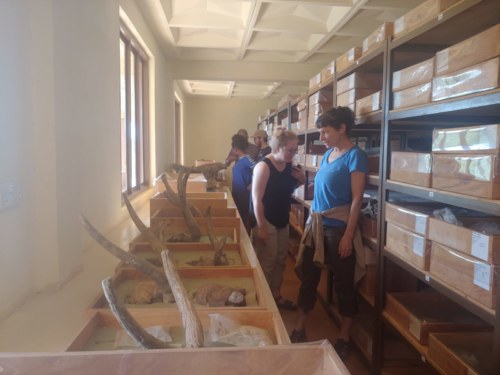
Dr. Miller with the students in the Plio-Pleistocene lab. Photo credit: Medina Lubisia.
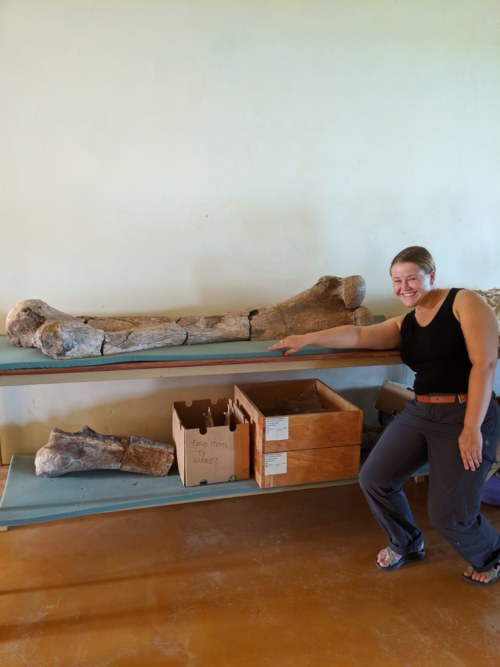
Becca posing with an elephant femur. Photo credit: Amber Treadway.
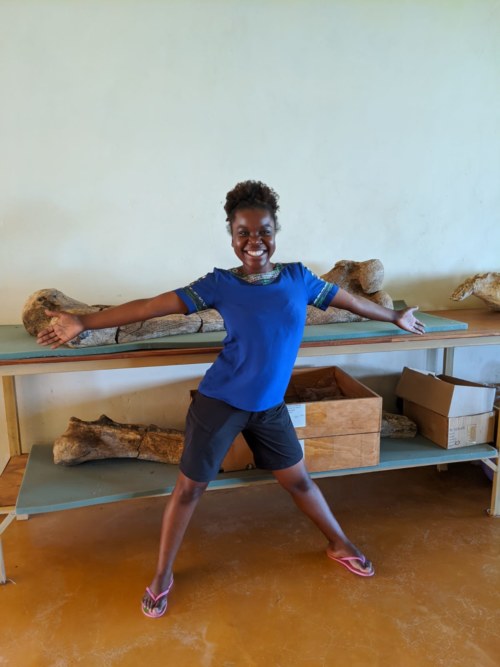
Clara used her body for size scaling against the elephant femur. Photo credit: Amber Treadway.
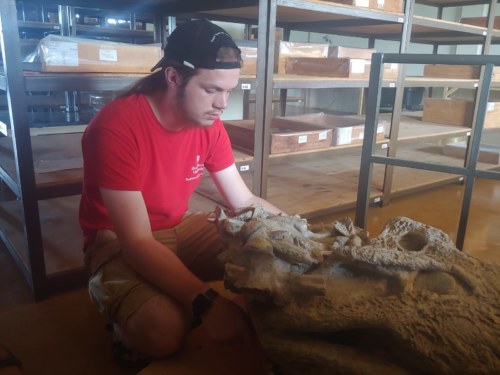
Michael admiring this extinct crocodile skull. Photo credit: Medina Lubisia.
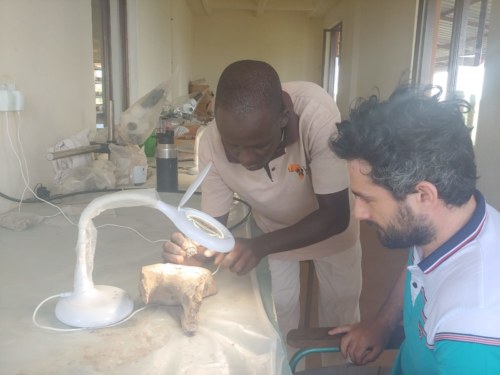
Sale showing Zak how to use the air scribe. Photo credit: Medina Lubisia.
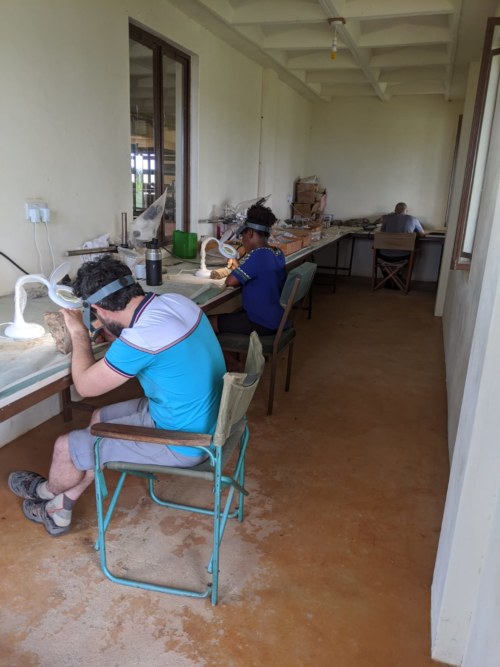
Zak, Clara, and Joe cleaning fossils in the Preparation lab. Photo credit: Amber Treadway.
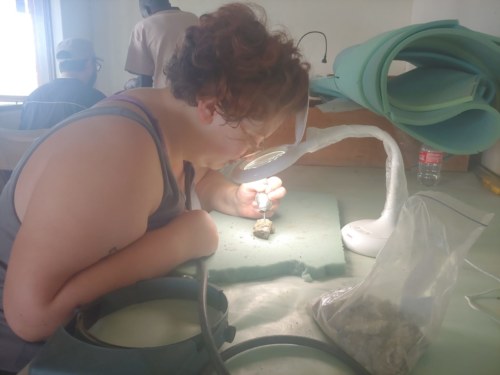
Emma busy cleaning a fossil. Photo credit: Medina Lubisia.
Stay tuned for more updates on our camping trip at Buluk!





